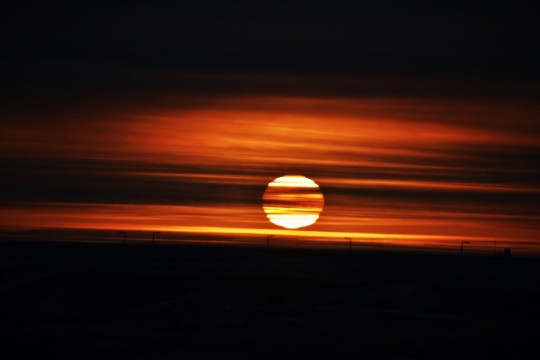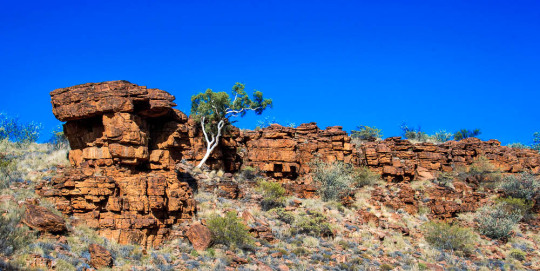#northernterritories
Explore tagged Tumblr posts
Photo

The Lost City is a series of large sandstone outcrops that evoke the remains of an ancient civilisation. A spectacular sight, this landmark is located in a remote and hard to access area in Litchfield National Park
36 notes
·
View notes
Text
The government green-lit fracking in the Northern Territory based on a CSIRO report found to have “systematically underestimated” emissions and offsets by up to 84%. @juliabergin1 reports.
#ntpol#ntgov#northernterritory#csiro#ausgov#politas#auspol#tasgov#taspol#australia#fuck neoliberals#neoliberal capitalism#anthony albanese#albanese government#co2 emissions#co2#gas#fracking#frack off#carbon dioxide#carbon#pollution#pollutants#polluted water#gas industry#climate and environment#environmentalism#environmental activism#environmental#environment
2 notes
·
View notes
Text
Reliable NDIS Services Provider in Northern Territory – Mapple Care
Discover personalized and reliable NDIS services with Mapple Care in Northern Territory. Supporting individuals with disabilities through tailored care plans and exceptional support.
0 notes
Text
JOBSTAR AUSTRALIA wishes you a Merry Christmas and a Happy, Prosperous New Year! 🎄✨ We hope the year ahead brings you abundant joy, success, and growth in all your endeavors. If you have any questions, don’t hesitate to reach out. Our friendly team is here to support you in planning your hiring needs and achieving your goals.
Email us: [email protected] Call us on: 1300 554 286 or 0425 748 665 to speak to a real person. Use our website: www.jobstaraustralia.com.au
#Jobseeker#Employer#Dreamjobs#Australia#Jobstar#Jobstaraustralia#sydney#melbourne#westernaustralia#perth#adelaide#hobart#tasmania#australiancapitalteritory#JobsAsutralia#JOBS#Canberra#NewSouthWales#Victoria#Queensland#Brisbane#SouthAustralia#NorthernTerritory#Darwin
0 notes
Text


Newcastle Water, NT with the Maestro 18 SV in a relaxing 45 degree heat 🌶️🥵🔥 Call #MuddyRiverAG for more details 07 4580 0825 Follow us on your favourite social media here https://linktr.ee/MuddyRiverAustralia
0 notes
Link
Descubre Uluru, el icónico monolito de Australia. Conoce su historia sagrada y las impresionantes formaciones rocosas de Olgas cerca de Ayers Rock. #Australia
#uluru#uluruandkatatjuta#northernterritory#nacionalulurukatatjuta#uluruayersrock#ulurukatatjutanationalpark#australia#ayersrockresort#aboriginalpeople#alicesprings
0 notes
Text


The Department of Home Affairs announced state and territory nomination allocations for the year 2023-24!
The department has outlined that the nomination allocations do not reflect the total number of visa applicants in these categories, leaving open the possibility for more allocation in the future.
Read the individual allocations for each state for this financial year below
For more updates, stay tuned with us: www.aivesaustralia.com Contact Us:
📞 UAE - +971 52 8942 393 📞 Kochi- +917994443030 📞 Australia - +61413863628 📞 Bangalore - +919986400077
#australiamigration#aivesaustralia#kochi#dubai#bangalore#melbourne#australia#skilledmigration#MARA#immigrationlawyer#migrationagent#immigrationconsultant#victoria#queensland#southaustralia#westernaustralia#tasmania#northernterritory#australiancapitalterritory#newsouthwales
0 notes
Text

#NorthernTerritory
Sunset on Canadian land. October 11th, 2023.
#Northern Territory#Canadian Land#Sunset#Nature Photography#Nature Canada#Landscape#Photography#Wild Landscapes#IUCN#International Union for Conservation of Nature#ECCC#Environment and Climate Change Canada#Nature#NCC#Nature Conservancy of Canada#Wilderness Need Protection#The North Face#Mountainous Parts of the Northern Hemisphere#Canada#The RavenKeeper#The Bone Collector
392 notes
·
View notes
Photo

Some of the beautiful views one get on the East McDonnell Ranges walks
#Cactus#Excire 2024 (en) mcdonnellranges northernterritory#Holiday 2023#MacDonnell Ranges#Nature#Plant
7 notes
·
View notes
Text
JOBSTAR AUSTRALIA wishes you a Merry Christmas and a Happy, Prosperous New Year! 🎄✨ We hope the year ahead brings you abundant joy, success, and growth in all your endeavors. If you have any questions, don’t hesitate to reach out. Our friendly team is here to support you in planning your hiring needs and achieving your goals.
Email us: [email protected] Call us on: 1300 554 286 or 0425 748 665 to speak to a real person. Use our website: www.jobstaraustralia.com.au
#Jobseeker#Employer#Dreamjobs#Australia#Jobstar#Jobstaraustralia#sydney#melbourne#westernaustralia#perth#adelaide#hobart#tasmania#australiancapitalteritory#JobsAsutralia#JOBS#Canberra#NewSouthWales#Victoria#Queensland#Brisbane#SouthAustralia#NorthernTerritory#Darwin
0 notes
Text
Horsch 8 HD Joker @ Maryfield Station, NT.
#MuddyRiverAG for more details 07 4580 0825
0 notes
Link
Descubre Uluru, el icónico monolito de Australia. Conoce su historia sagrada y las impresionantes formaciones rocosas de Olgas cerca de Ayers Rock. #Australia
#australia#nacionalulurukatatjuta#uluruayersrock#aboriginalpeople#uluruandkatatjuta#uluru#alicesprings#northernterritory#ayersrockresort#ulurukatatjutanationalpark
0 notes
Text
"We make no apologies for delivering on our commitments to reduce crime for all Territorians."
Children as young as 10 can soon be jailed once again in Australia's Northern Territory (NT), after the government there lowered the age of criminal responsibility.

Australian states and territories have been under pressure to raise it, from 10 to 14, in line with other developed countries and UN advice.
NT authorities argued that returning the age to 10 will ultimately protect children - despite doctors, human rights organisations and Indigenous groups disputing that logic.
Opponents to the change cite evidence that the laws will not reduce crime and will disproportionately affect Aboriginal and Torres Strait Islander children.
The NT already jails children at a rate 11 times higher than any other jurisdiction in the country, and almost all of them are Aboriginal.
Tap the link in our bio to read more about the tensions the change has caused.
(📸 Getty Images)
#Australia #NorthernTerritory #allthenewz
0 notes
Photo

The Rainbow Bee-Eater is a spectacular bird. With its green, blue, chestnut and yellow plumage, its slim build, slender curved bill and distinctive streamers that extend from the end of its tail, it is simply beautiful.
11 notes
·
View notes
Text

Another popular sport in Australia is rugby league.🏉
#Australia #Aussie #rugby #rugbyleague #NRL #Canberra #NewSouthWales #Victoria #news #Queensland #WesternAustralia #SouthAustralia #Tasmania #NorthernTerritory #Sydney #Melbourne #Brisbane #Perth #Adelaide #GoldCoast #Hobart #darwin #football #footy #downunder #newcastle #sunshinecoast #wollongong #geelong #townsville #cairns #rockhampton #beer #BrisbaneBroncos #CanberraRaiders #Bulldogs #CronullaSharks #TheDolphins #GoldCoastTitans
#SeaEagles #MelbourneStorm #NewcastleKnights
#NorthQueenslandCowboys #ParramattaEels #PenrithPanthers #SouthSydneyRabbitohs #StGeorgeIllawarraDragons #SydneyRoosters #NewZealandWarriors #WestsTigers #news #sport #sports #Oceania #Auckland #NewZealand #Kiwi
#nrl#rugby#rugby league#australia#auckland#new zealand#brisbane broncos#CanberraRaiders#Bulldogs#CronullaSharks#TheDolphins#GoldCoastTitans#SeaEagles#melbourne storm#NewcastleKnights#NorthQueenslandCowboys#parramatta eels#PenrithPanthers#SouthSydneyRabbitohs#StGeorgeIllawarraDragons#sydney roosters#NewZealandWarriors#WestsTigers#Sydney#townsville#newcastle#melbourne#gold coast#brisbane#canberra
9 notes
·
View notes
Text
Get Ready for Holiday Hiring with Jobstar Australia!
With the festive season fast approaching, it’s the perfect time to bring in extra team members to handle the holiday rush! Jobstar Australia makes hiring for the holidays easy, fast, and effective. Whether you’re an employer looking to hire seasonal staff or a job seeker searching for the perfect holiday gig, Jobstar has you covered.
Why Use Jobstar Australia?
Jobstar Australia is tailored to meet the needs of Australian businesses and job seekers. Here’s why you should choose us:
Fast Job Posting: Employers can quickly list vacancies, reaching a broad network of applicants within minutes.
Wide Industry Reach: From retail to hospitality and beyond, Jobstar covers all sectors to ensure you find the right fit.
Smart Search for Applicants: Job seekers can filter by industry, location, and job type, making it easy to find roles suited to their needs.
24/7 Support: Our support team is available around the clock to help make your hiring process seamless.
Make This Holiday Season a Success!
We offer big discounts for bulk postings!
Sign up on Jobstar Australia today and start hiring or searching for holiday roles in minutes. Don’t wait—connect with the best talent and opportunities this festive season with Jobstar Australia.
Our friendly team are there to help you plan your hiring needs.

Email us:
Call us on:
1300 554 286
Use our website:
www.jobstaraustralia.com.au
#Jobseeker#Employer#Dreamjobs#Australia#Jobstar#Jobstaraustralia#sydney#melbourne#westernaustralia#perth#adelaide#hobart#tasmania#australiancapitalteritory#JobsAsutralia#JOBS#Canberra#NewSouthWales#Victoria#Queensland#Brisbane#SouthAustralia#NorthernTerritory#Darwin
0 notes